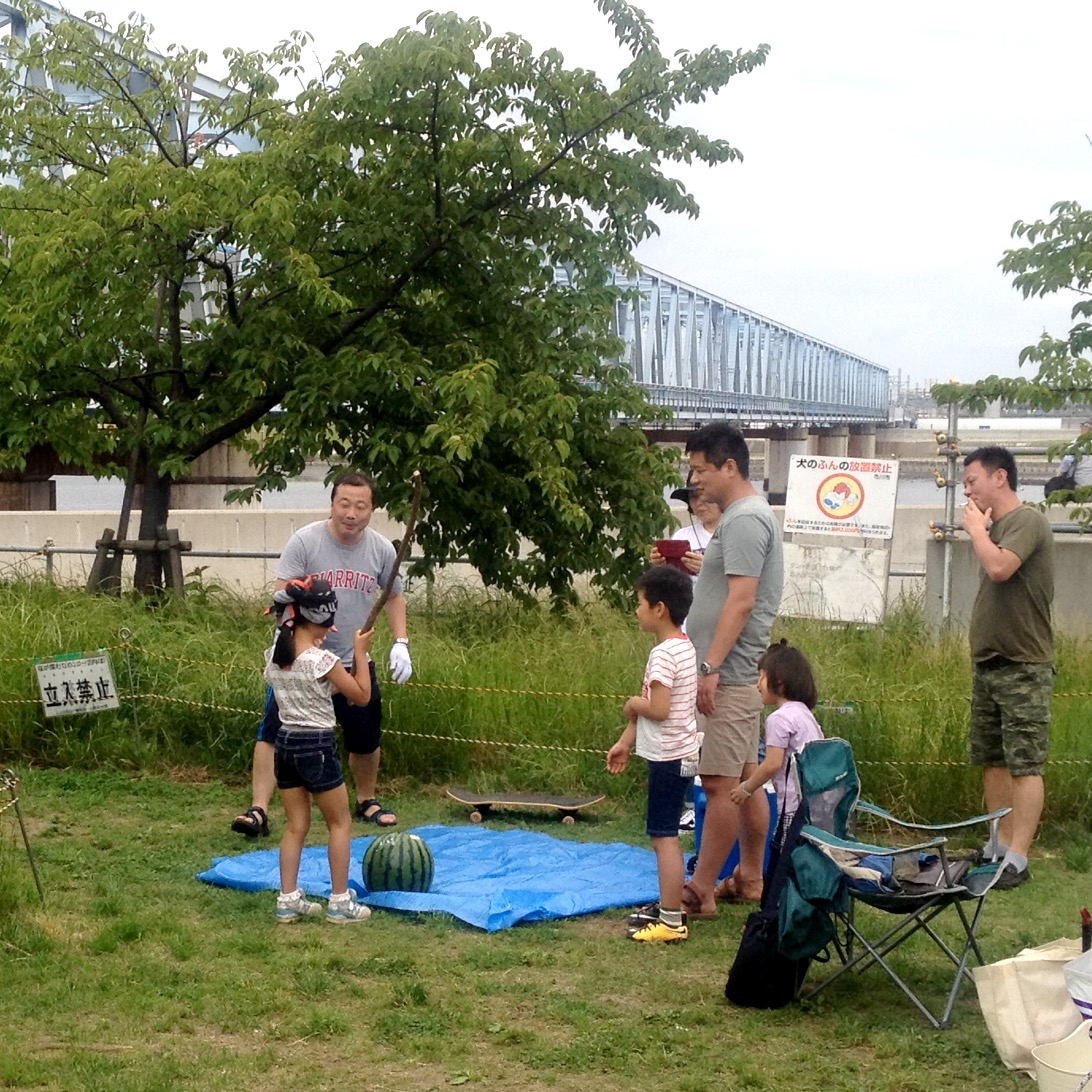Suikawari on:
[Wikipedia]
[Google]
[Amazon]
is a traditional 
 The rules are similar to
The rules are similar to
Japan
Japan ( ja, 日本, or , and formally , ''Nihonkoku'') is an island country in East Asia. It is situated in the northwest Pacific Ocean, and is bordered on the west by the Sea of Japan, while extending from the Sea of Okhotsk in the north ...
ese game that involves splitting a watermelon
Watermelon (''Citrullus lanatus'') is a flowering plant species of the Cucurbitaceae family and the name of its edible fruit. A scrambling and trailing vine-like plant, it is a highly cultivated fruit worldwide, with more than 1,000 varieti ...
with a stick while blindfolded. Played in the summertime, suikawari is most often seen at beaches, but also occurs at festivals
A festival is an event ordinarily celebrated by a community and centering on some characteristic aspect or aspects of that community and its religion or cultures. It is often marked as a local or national holiday, mela, or eid. A festival co ...
, picnics
A picnic is a meal taken outdoors ( ''al fresco'') as part of an excursion, especially in scenic surroundings, such as a park, lakeside, or other place affording an interesting view, or else in conjunction with a public event such as preceding ...
, and other summer events.

 The rules are similar to
The rules are similar to piñata
A piñata (, ) is a container, often made of papier-mâché, pottery, or cloth, that is decorated, filled with candy, and then broken as part of a celebration. Piñatas are commonly associated with Mexico. The idea of breaking a container filled ...
. A watermelon is laid out, and participants one by one attempt to smash it open. Each is blindfolded, spun around three times, and handed a wooden stick, or bokken
A ''bokken'' (, , "wood", and ''ken'', "sword") (or a ''bokutō'' ) is a Japanese wooden sword used for training in kenjutsu. It is usually the size and shape of a ''katana'', but is sometimes shaped like other swords, such as the ''wakizashi'' ...
, to strike with. The first to crack the watermelon open wins.
Other participants or teammates may also give the player hints such as left/right or straight ahead.
Afterwards the chunks of watermelon produced are shared among participants. Because the watermelon can fall into the sand and get dirty, a sheet, a piece of cardboard, or other element is commonly placed beneath it.
"Official" "rules"
Japan Suika-Wari Association Rules
The Japan Suika-Wari Association (JSWA), established by the Japan Agricultural Cooperative (JA), established a set of rules in 1991 governing the game.”スイカ割りのルール”. Michinoku-Murayama Agricultural Cooperative Association Web site. http://www.mitinoku.or.jp/tokusan/suika_wari.htm The JSWA was created by the JA to increase consumption of watermelon. The organization no longer exists. The rules established were as follows: * Distance between player and watermelon: over 5m, and within 7m * Stick: Circumference of 5cm; length equal to or less than 120cm. * Material to use for blindfold: JSWA-recognized blindfolds. To verify that the player was truly blinded, observers were encouraged to drop a 10,000-yen note in front of her. * Watermelon: a well-ripened domestic melon. * Time limit: 3 minutes. * Judging: Judges should rate the player on how pretty a break between halves she managed to make. Players who cleaved the watermelon in equal halves could come close to a perfect score, while players who broke them into unequal parts would receive lower marks. * Other details: Judges should have eaten at least 10 watermelons in the current year.See also
*Piñata
A piñata (, ) is a container, often made of papier-mâché, pottery, or cloth, that is decorated, filled with candy, and then broken as part of a celebration. Piñatas are commonly associated with Mexico. The idea of breaking a container filled ...
References
{{reflist Japanese games Watermelons